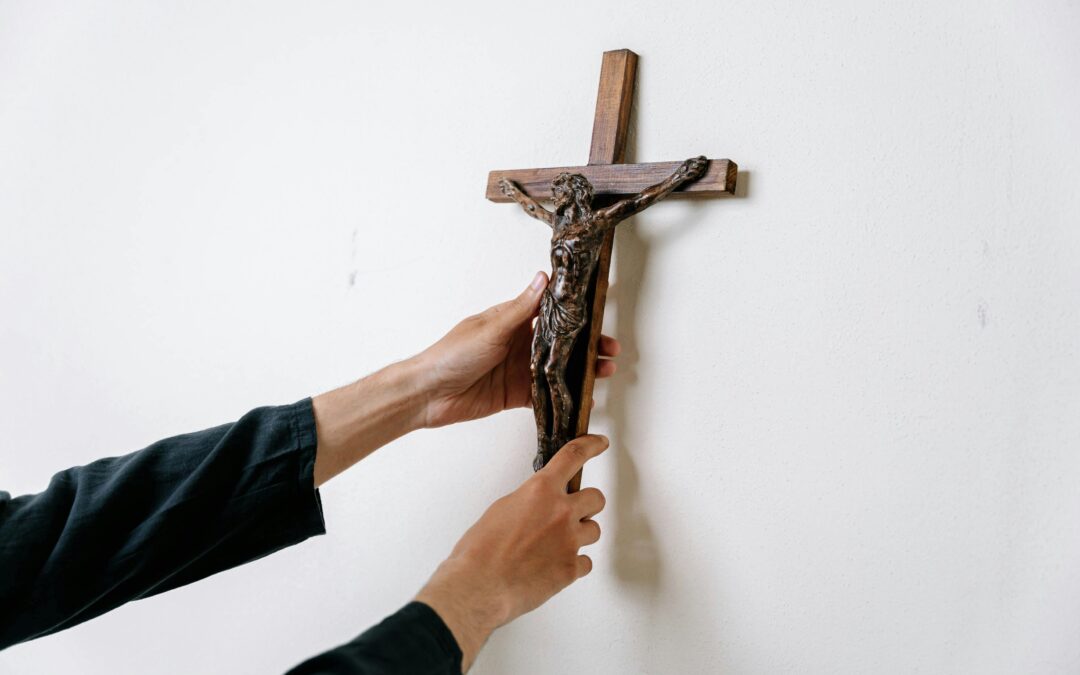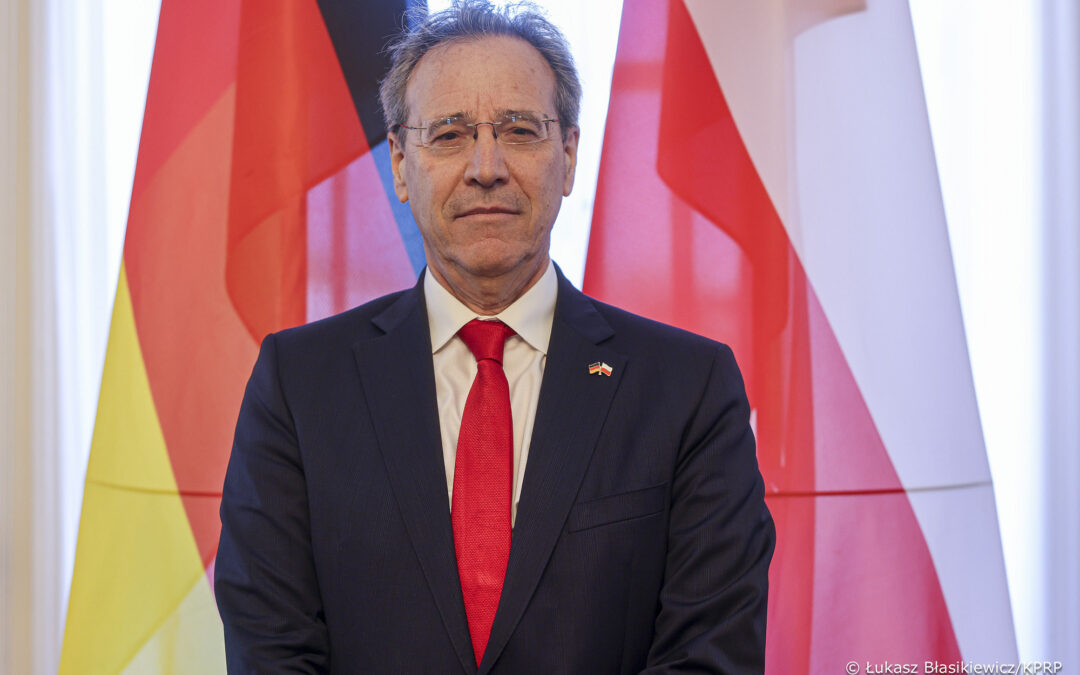By Paulina and Wojciech Siegień
A march in memory of the “cursed soldiers” – Polish partisans who resisted the introduction of communism, but some of whom were involved in war crimes against ethnic minorities – yesterday passed through the streets of Hajnówka for the fifth time. The controversial event, organised by far-right groups, has become an unwanted annual tradition for a town in eastern Poland that is inhabited by a large Belarusian minority.
On the morning of Sunday, 23 February, Hajnówka, a small town on the edge of the Białowieża Forest, feels like a besieged fortress. Roads leading into the city are blocked by the police, who stop every car. Drivers are asked if they are going to the March of Remembrance of the Cursed Soldiers. Answering “yes” means additional checks.
The march is organised by Polish nationalist groups. Their aim is to honour the soldiers of the Polish armed underground movement who, at the end of the Second World War, fought against the imposition of communism in Poland and, as a result, were persecuted by the communist authorities.
The extraordinary police measures and tangible tension in the town, however, stem from the fact that among the soldiers honoured at the march are those responsible for crimes against the Belarusian civilian population living around Hajnówka. The main historical figure of the march is Romuald Rajs, known by the nom de guerre “Bury”, whose unit murdered 79 people (among them women, children and the elderly). The reason for Bury’s raids on Belarusian villages was the local people’s alleged cooperation with communists.
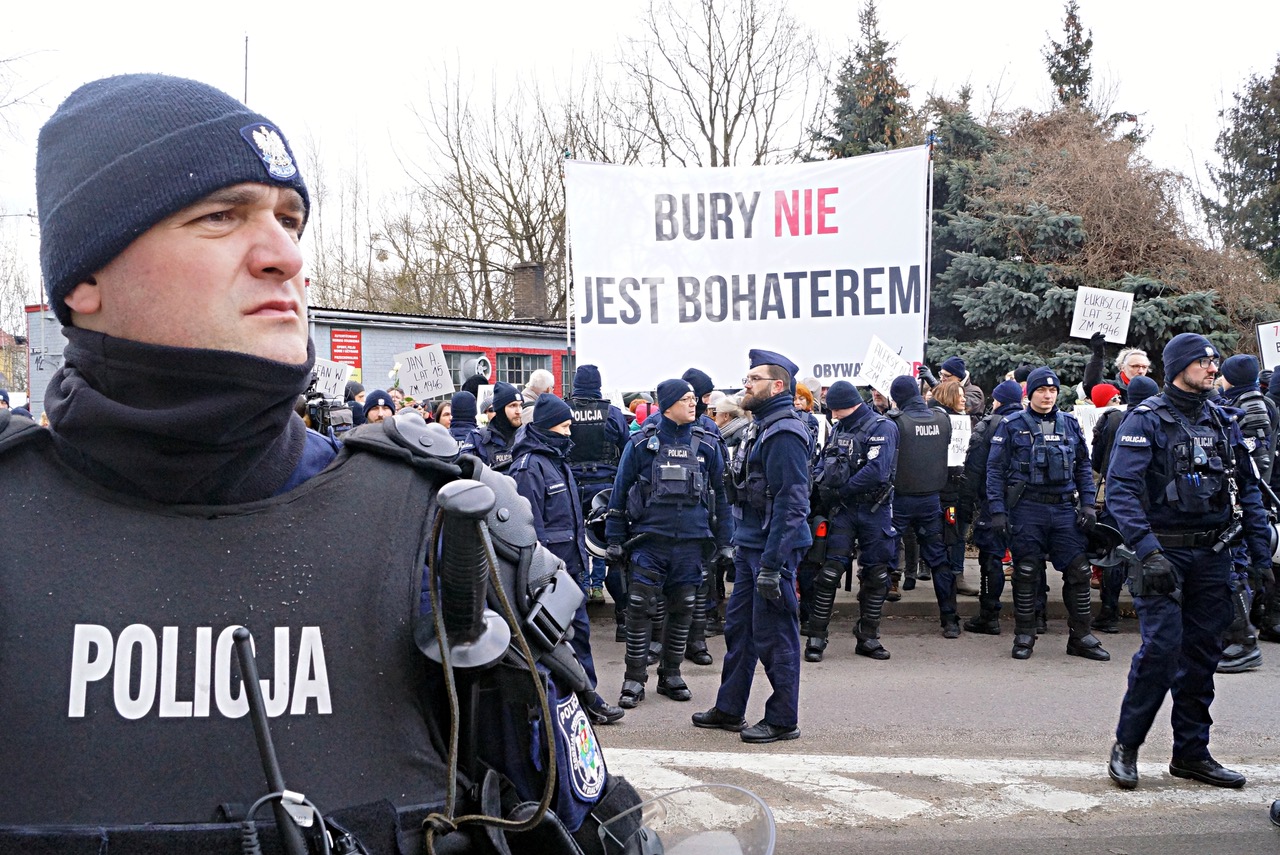
The march was first organised in Hajnówka in 2016, at a time when the nationalist movement and its ideas were on the rise and following the election of the conservative Law and Justice (PiS) party. Among the organisers are the same far-right groups, such as the National Radical Camp (ONR), that are behind the controversial annual Independence Day march in Warsaw.
The first march was initially advertised as being under the official patronage of the president, Andrzej Duda. However, following heavy criticism, the president’s office announced that it was refusing to lend its name to the event.
A war criminal to some, a hero to others
For many of the people of Hajnówka, the annual arrival of the nationalist marchers is an unwanted provocation. For the Belarusian minority in surrounding Podlasie region, the man being honoured, Bury, is a war criminal, not a hero. To hear Bury’s deeds loudly praised in the streets hurts the feelings of many locals.
Yesterday, many of those opposed to the march gathered at an Orthodox church service, from where they passed to the Monument to the Victims of War and Repressions. The organisers emphasised that the gathering is an independent initiative, not associated with any political party.
There, the youth of Hajnówka read the names of the victims of Bury’s soldiers. The audience listened in silence: a 62-year-old, murdered in the woods; a 24-year-old with wounds to the head; others buried in a mass grave, shot, removed from the womb, burned to death. Those gathered then lit candles at the monument in memory of the victims.
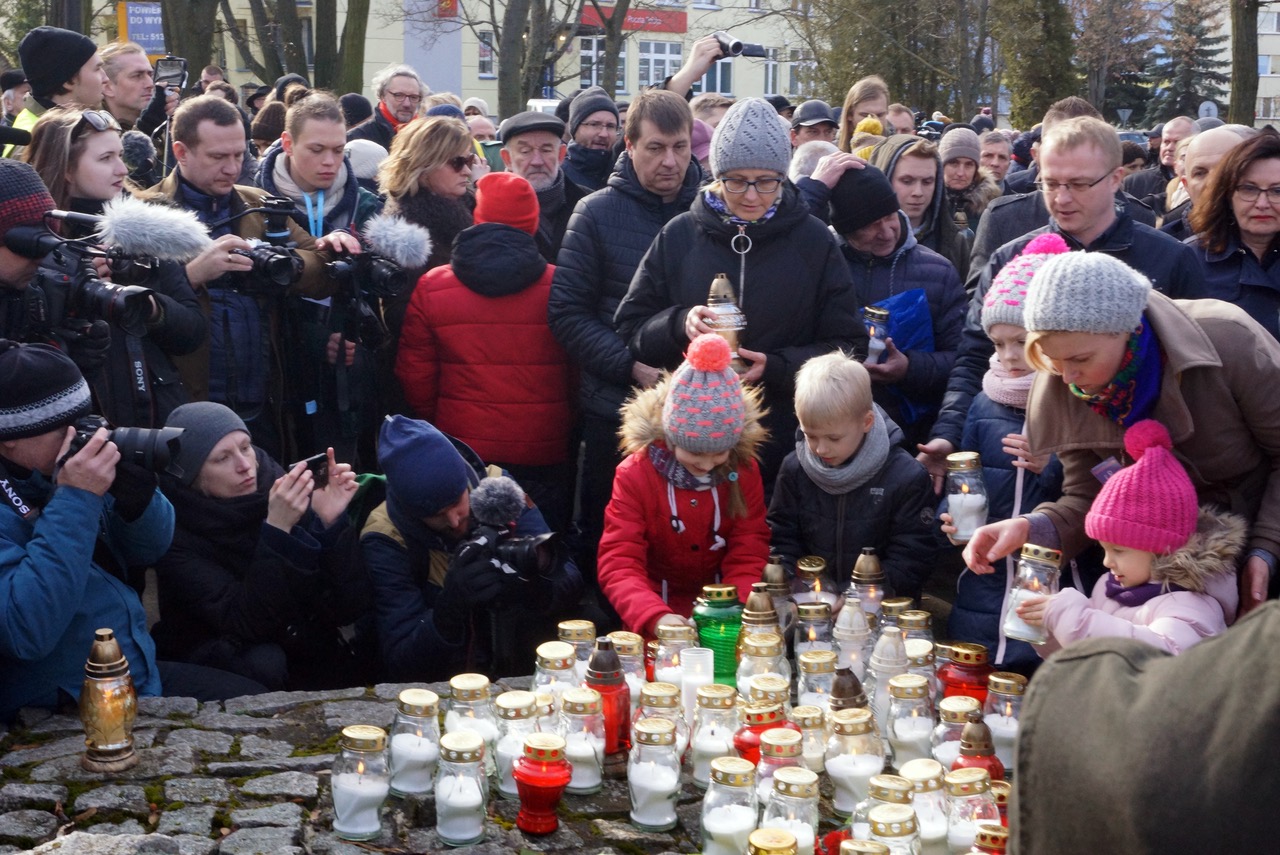
The commemoration was the initiative of an informal group of locals calling themselves “Nasza Pamiać” (“Our Memory” in Belarusian). “We came up with the idea of this commemoration because of our children, says Ewa Moroz-Keczyńska, a local activist and one of organisers.
“It started among women and mothers. We talked about our children who felt offended by the nationalist march and expressed the will to do something to oppose it. And we realised that we cannot be violent in any way. We were not interested in politics; we were just concerned about the values we are raising our children with. So we decided on a peaceful commemoration of the victims. Because everybody discusses the perpetrator, and not the victims.”
People standing in the crowd could not hide their emotions. Two older gentlemen were encouraged by the fact that so many young people had come to honour the victims. “Let them remember that such bestiality took place here”, one of the men remarked. “But there are a lot of young people on the march too”, added an old lady listening in on the conversation.
Indeed, also in the audience is a group of four men with a rolled-up Polish flag. They look on from the side. When Robert Biedroń, a left-wing presidential candidate who is gay, appears in the crowd, one of the men comments: “Look, once there was the Żydokomuna (Judeo-communism), now there’s homokomuna”. All four laughed.
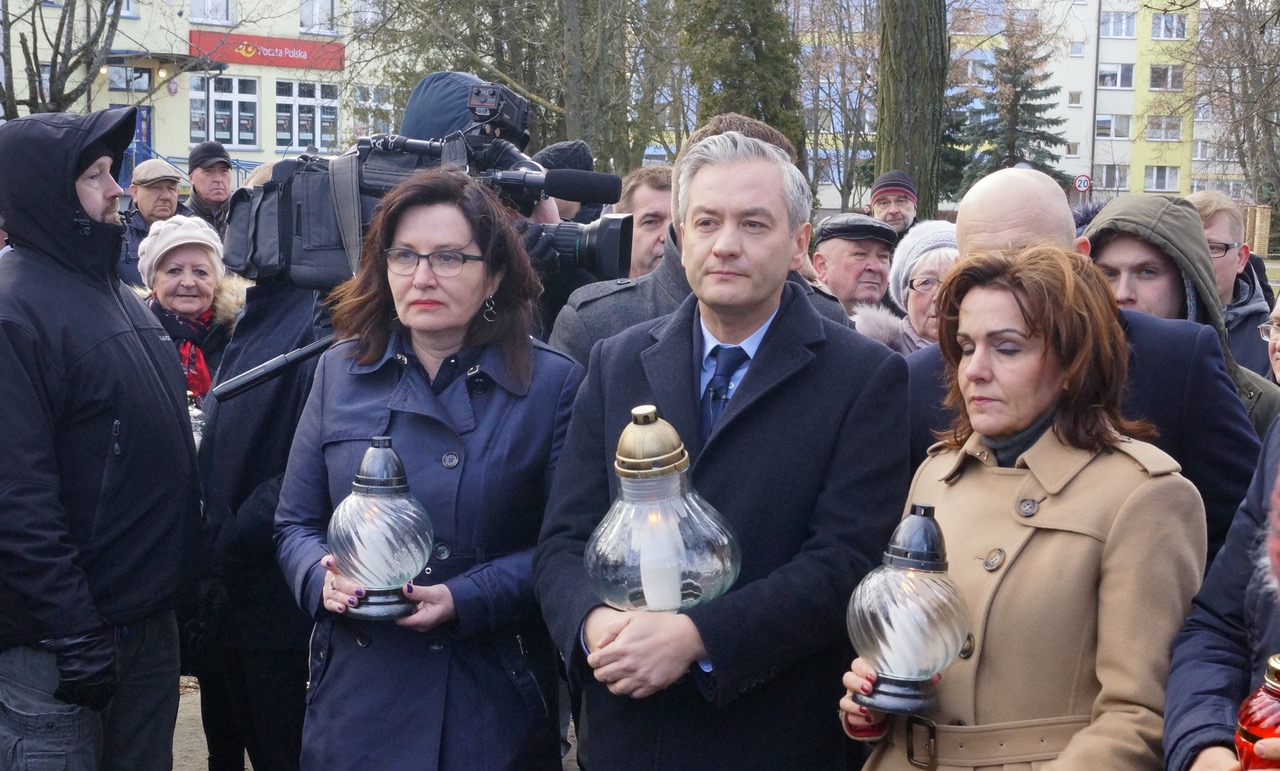
“I very much appreciate the actions of Romuald ‘Bury’ Rajs,” one participant in the march, Wiesław Bielawski, tells us. He arrived this morning from the city of Białystok. “Bury was one of the greatest Polish heroes of the postwar period. He and his troops fought communists, manage to eliminate communist party cells, fought people collaborating with communists, executed traitors to the Polish nation.”
Asked if civilians killed in 1946 were traitors to the Polish nation, Bielawski and his friends argue that civilians died only because they did not obey the orders of Bury’s soldiers. Why did Bury burn one of the villages? Because this property served traitors to the Polish nation.
“It was a tragedy, but this was war and people die in war,” explains Andrzej Jędrzejewski, also from Białystok. “To be honest, I don’t understand the [attitude of the] local people. The Soviet regime was not good, it caused the deaths of millions of people. That time you had a simple choice: to stand with the enemy or to stand with the fatherland. Bury choose the fatherland and, if there were victims, then too bad.”
But the picture is not as simple as it may seem to those who praise Bury. An investigation conducted in 2005 by the Polish Institute of National Remembrance (IPN), a state body responsible for investigating historical crimes, concluded that Bury’s actions against Belarusian and Orthodox people in the Hajnówka region “bear the hallmarks of genocide” and therefore “cannot be identified with the struggle for [Polish] independence”. In fact, they “helped the communist apparatus of power” by harming the prestige of the underground resistance and providing material for communist propaganda.
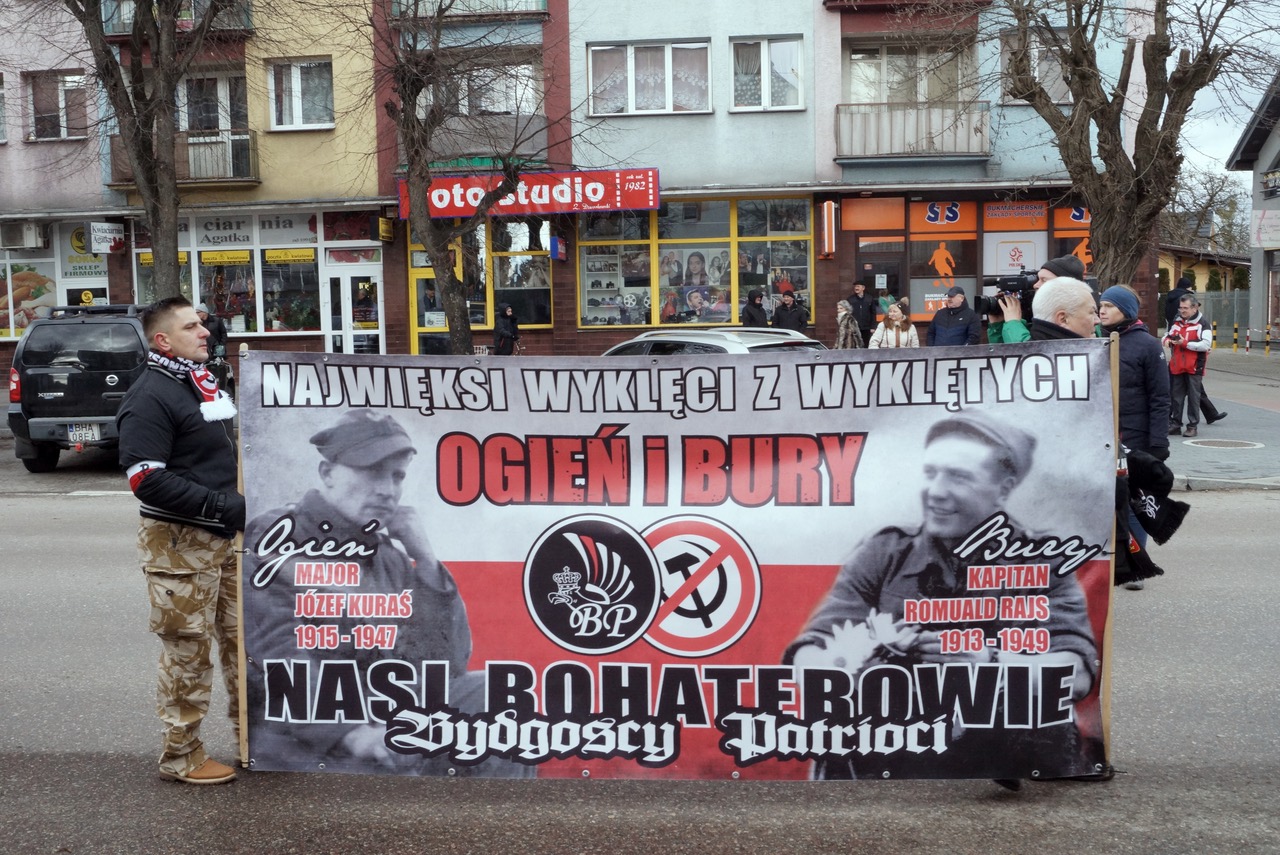
However, last year the IPN, now under the influence of PiS and an integral part of its “historical policy”, revised this conclusion. Referring to a more recent article by two historians, it now claims that Bury’s deeds cannot be regarded as genocide since, if he had wanted to set more Belarusian villages on fire, he could easily have done so. Still, nobody denies the fact that Bury’s unit killed Belarusian civilians.
“Death to enemies of the fatherland”
The nationalist march began after Mass at a Catholic church. Small groups of locals watched the preparations and the march itself from across the road. When the procession lined up, among the slogans on display were: “Death to the enemies of the fatherland”, “Bury is our hero!”, as well as some more unusual messages like “Underground soldiers fought for democracy and the free market in Poland”.
The organisers of the march had made bold claims when announcing the event, declaring that they were coming to Hajnówka, a town that was “administratively” but not “mentally” part of Poland, in order to “overthrow the last bastion of communism in Poland”. Yet the reality was rather more underwhelming. Only 150 people took part, according to police estimates. Locals say that the numbers are decreasing from year to year.
Yet, even if no bastions were overthrown, the march should not be disregarded as something harmless, warns Professor Anna Engelking, an anthropologist from the Polish Academic of Sciences who attended the event.
She noted that after the nationalist procession, a group of historical reenactors dressed as Bury’s unit held their own march. “What we see here in Hajnówka, the whole march, it is a symbolic reenactment of an ethnic purge,” says Engelking.
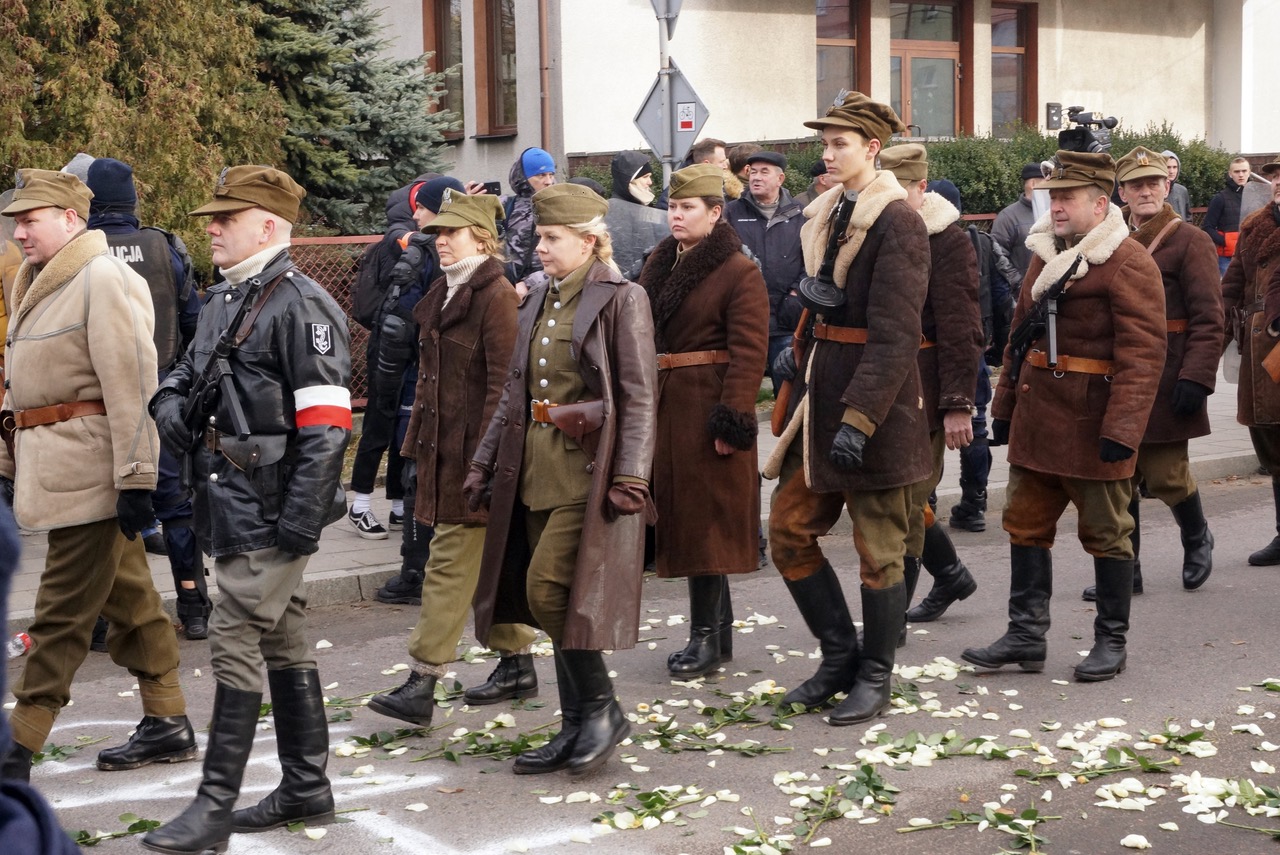
While the march did not attract any prominent right-wing politicians, it did draw the attention of members of the opposition. As well as Biedroń, another left-wing leader, Adrian Zandberg, and an MP from the centrist Civic Platform, Robert Tyszkiewicz, lit candles at the monument to war victims.
Organisers from Nasza Pamiać explain that they do not invite politicians, but they also cannot forbid anybody from taking part. “At least they follow our rules,” says Moroz-Keczyńska. “They do not get to speak here and they are not honoured in any other way, and they are OK with it.”
But it is not hard to see that local people mistrust outsiders who turn up to oppose the march – rather than commemorate the victims – almost as much as they do the nationalists in the procession itself. At the end of the march’s route, the nationalists were confronted with activists from two movements – Citizens of the Republic (Obywatele RP) and the Committee for the Defence of Democracy (KOD) – involved in activism against PiS and the far right.
These people mostly came from Warsaw to block a march they regard as fascist. They were also here last year and the year before that. A tall man called out to them: “What do you come here for?! Hajnówka is a good town!”
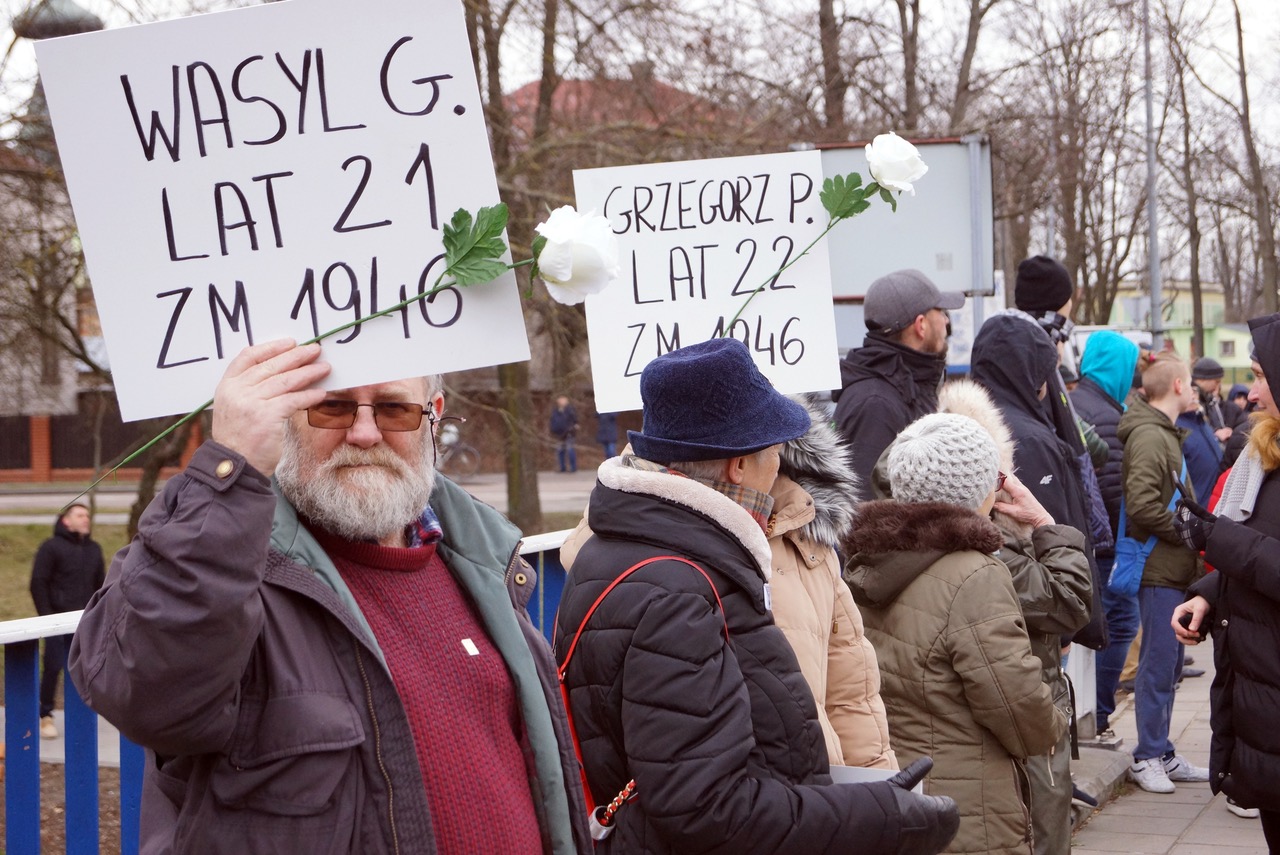
Until the first March of Remembrance of the Cursed Soldiers, Hajnówka was a place that believed it had managed to come to terms with a painful history and maintain peaceful cohabitation of Poles and Belarusians. That peace was shattered by people seen as intruders.
The mayor of Hajnówka, who was behind previous efforts to ban the march, has given up. The city council appealed to residents to ignore the march. Locals feel that the situation has taken them hostage. What people here would like most of all would be for none of this to be happening.
Credit for all images: Paulina and Wojciech Siegień



